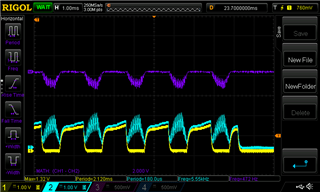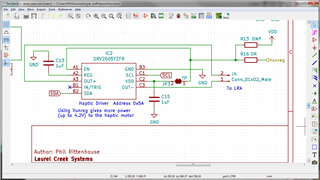Hi,
I am having trouble getting the RTP mode to work well with LRAs. The vibration seems inconsistent and does not ramp up smoothly with the value I set in RTPIN.
Autocalibration seems to work - it does not return an error. I have tried a few different LRAs from Vibronics (VG1040003D, VG0840001D, VG0832022D), all with similar results so I suspect I have something misconfigured.
Here's an example of the configuration settings I am using
// VG0832022D - 235Hz 1.4g 1.8Vrms // https://www.vybronics.com/wp-content/uploads/datasheet-files/Vybronics-VG0832022D-Jinlong-G0832022D-datasheet.pdf // SampleTime = 300use writeRegister8(DRV2605_REG_RATEDV, 0x46); // Vrms writeRegister8(DRV2605_REG_CLAMPV, 0x5B); // Vpeak writeRegister8(DRV2605_REG_FEEDBACK, 0xB6); writeRegister8(DRV2605_REG_CONTROL1, 0x93); //writeRegister8(DRV2605_REG_CONTROL2, 0xF5); // Bidirectionl writeRegister8(DRV2605_REG_CONTROL2, 0x75); // Unidirectionl writeRegister8(DRV2605_REG_CONTROL3, 0x80); writeRegister8(DRV2605_REG_MODE, 0x07); writeRegister8(DRV2605_REG_CONTROL4, 0x20);
When I check the output on a 'scope I see both outputs in phase with each other. At low RTPIN settings they just cancel each other out. At higher settings one side starts a half-wave that drives the LRA but not at the expected frequency. I see 470 Hz instead of the expected 235Hz

Any help would be greatly appreciated


